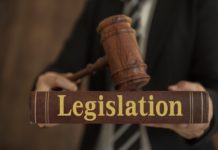Federal Court (Full Court). Did para 9.2(1)(a) of Direction 90 require that there must be medical certification in order for a non-citizen’s “health” to be taken into account under that paragraph? Can it be said that para 9.3(1) applied "only to the impact on a victim of the perpetrator remaining in Australia, and excluding consideration by a decision-maker of the impact upon a victim of an offender being removed from Australia"?
Some of the questions to the Full Court of the Federal Court (FCAFC) were as follows:
Question 1: Did s 501CA(4) of the Migration Act 1958 (Cth) confer "a wide discretionary power on a decision-maker to revoke a decision to cancel a visa held by a non-citizen if satisfied that there is “another reason” why that decision should be revoked"?
Question 2: Does the decision-maker undertake the assessment under s 501CA(4)(b)(ii) of whether there is "another reason" to revoke the cancellation by reference to the case made by the representations of the former visa holder?
Question 3: Does Direction 90 limit the considerations to which a decision-maker may have regard in exercising the discretion under s 501CA(4)?
Question 4: Can it be said that Direction 90 does not require that a decision-maker must invariably take into account the considerations it specifies, in that what is required under para 6 is that a decision-maker take into account the considerations identified in paras 8 and 9 'where relevant' to the decision?
Question 5: Is the legislature taken to intend that the discretionary power under s 501CA(4)(b)(ii) will be exercised reasonably?
Question 6: Can it be said that a decision-maker’s opinion as to the relevance of the considerations in paras 8 and 9 of Direction 90 must be formed reasonably and rationally having regard to the statutory scheme and the representations and other material before the decision-maker?
Question 7: Paragraph 9.2(1)(a) of Direction 90 required that the Tribunal “must consider the extent of any impediments that the non-citizen may face if removed from Australia to their home country, in establishing themselves and maintaining basic living standards, taking into account…the non-citizen’s age and health”. Was the issue under this paragraph not merely whether the non-citizen had a health condition, but whether any health condition posed an impediment of that kind?
Question 8: Would the word “health” in the phrase “age and health” in para 9.2(1)(a) "ordinarily be understood to mean any aspect of a person’s physical wellbeing"?
Question 9: Was the word "health" also capable of encompassing a person’s mental wellbeing?
Question 10: Where it is reasonably open to determine that a condition falls within that expression, is the question as to whether it does or does not one of fact for the decision-maker?
Question 11: Can it be said that "para 9.2(1)(a) [of Direction 90] requires that there must be medical certification in order for a non-citizen’s “health” to be taken into account under that paragraph"?
Question 12: Can it be said that, "[w]ithin ordinary parlance, a person’s status as having a history of substance abuse, especially where there was evidence from which it may be concluded that there was a real risk of relapse into misuse of substances to such an extent that it would be an impediment to a person being able to establish and maintain basic living standards, is aspect of that person’s overall health"?
Question 13: Can it be said that, "whether evidence of a history of substance abuse clearly raises an issue as to whether a person has a health condition and whether it may pose an impediment to their ability to establish and maintain basic living standards is very much a factual question which depends upon the content of the material before the decision-maker"?
Question 14: Did the latter part of para 9.3(1) of Direction 90, commencing with the word “where”, indicate that the paragraph only has application where the non-citizen, “has been afforded procedural fairness”?
Question 15: Can it be said that para 9.3(1) of Direction 90 applied "only to the impact on a victim of the perpetrator remaining in Australia, and excluding consideration by a decision-maker of the impact upon a victim of an offender being removed from Australia"?
The FCAFC answered those questions as follows:
The remainder of this article is only available to Case Law and Platinum subscribers.
Read our Terms & Conditions and upgrade below:
Monthly Subscriptions
Annual Subscriptions
Where GST applies, the above amounts are inclusive of GST.
Content Types
Basic Content includes basic news, some media articles and selected announcements.
Premium Content includes all our content, except for Case Law Content. In other words, it includes Basic Content, plus all our articles on legislative and policy changes, industry updates and the Migration Legislation Tracker.
Case Law Content includes Basic Content, plus case law summaries, analysis and extract, but does not include Premium Content.
Platinum Content includes Basic Content, plus Premium Content, plus Case Law Content. In other words, it includes ALL our content.
If you already have a Case Law or Platinum subscription, click on 'Login' below.











